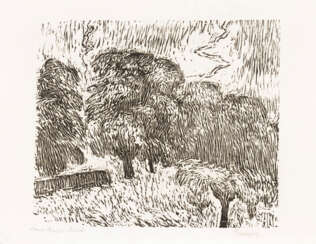wilhelm rudolph

Wilhelm Rudolph was a German painter, graphic artist and teacher.
Rudolph studied at the Dresden Art School, fought in World War I and returned to art. He went from Post-Impressionism to Expressionism and later became a follower of the New Objectivity with a bias towards socially relevant subject matter. Rudolph's first successes and fame came from his graphic depictions of animals.
In 1932, Wilhelm Rudolph was appointed a professor at the Dresden Academy of Art, but with the National Socialists coming to power in Germany, the artist's works were classified as so-called degenerate art. Since 1937 he was forbidden to exhibit and sell his works, 43 of his paintings were confiscated, and in 1939 he was dismissed from the Academy.
At the end of the war, the artist created his major work - an extensive graphic series of 150 sheets on the theme of the bombing of Dresden by American aircraft on the night of February 13-14, 1945, as a result of which the city was completely destroyed. This essential work remains an unrivaled artistic record of that tragedy. Wilhelm Rudolph was a two-time winner of the GDR National Prize and worked actively until his old age.


Wilhelm Rudolph was a German painter, graphic artist and teacher.
Rudolph studied at the Dresden Art School, fought in World War I and returned to art. He went from Post-Impressionism to Expressionism and later became a follower of the New Objectivity with a bias towards socially relevant subject matter. Rudolph's first successes and fame came from his graphic depictions of animals.
In 1932, Wilhelm Rudolph was appointed a professor at the Dresden Academy of Art, but with the National Socialists coming to power in Germany, the artist's works were classified as so-called degenerate art. Since 1937 he was forbidden to exhibit and sell his works, 43 of his paintings were confiscated, and in 1939 he was dismissed from the Academy.
At the end of the war, the artist created his major work - an extensive graphic series of 150 sheets on the theme of the bombing of Dresden by American aircraft on the night of February 13-14, 1945, as a result of which the city was completely destroyed. This essential work remains an unrivaled artistic record of that tragedy. Wilhelm Rudolph was a two-time winner of the GDR National Prize and worked actively until his old age.


Heinrich Wilhelm Trübner was a German realist painter of the circle of Wilhelm Leibl.


Heinrich Wilhelm Trübner was a German realist painter of the circle of Wilhelm Leibl.

















































































